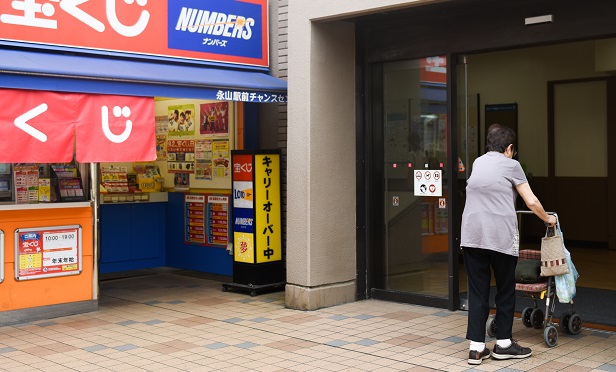
 (Photo: Noriko Hayashi/BB)
(Photo: Noriko Hayashi/BB)
As Japanese society ages and the government cuts social welfare spending, older women are bracing for the impact.
"The only people who can enjoy living until 100 are those who have enough money and family," said Setsuko Betsui, a 78-year-old woman living in Saitama, who gets by on 120,000 yen ($1,077) a month in benefits. "I'd rather die in two years."
Burdened by a public debt that amounts to 236% of gross domestic product, Japan's government is trimming spending on its ever-expanding elderly population. The Ministry of Finance is lobbying to push the age when pension benefits start to 68, up from 65. Until 2000 the age was 60. Elderly care and medical care contributions already have been cut.
At the same time, an increasingly large portion of the population is elderly and living longer. Those 65 and older now comprise 27% of society, up from nine% in 1980 — making Japan's population the world's oldest.
"The current social welfare system doesn't assume people living until 100 years old," said Yukiko Miyaki, chief researcher for The Dai-ichi Life Research Institute.
Older Women Hurt
Elderly women in particular are under financial strain because they are less likely to have jobs to supplement their benefits. While 55% of men in their late 60s currently work, only 35% of women in that age group have jobs, according to the Cabinet Office. It gets tougher to find work as aging progresses. Women comprise 88% of the nation's centenarians, a group that expanded to 68,000 in 2017 from 8,500 in 1997.
In the past the government counted on other sources of support for aging women. Wives benefited from their husbands' retirement bonuses and life insurance plans, and often they lived with their children after their husbands died. These days, one-time payouts from retirement don't cover the needs of lengthening lifespans, and family units are shrinking.
The relative poverty rate for elderly people, at 19.4%, exceeds the OECD average of 12.6%. Among these people, 52% of single women are living in relative poverty, compared with 38% of single men.



